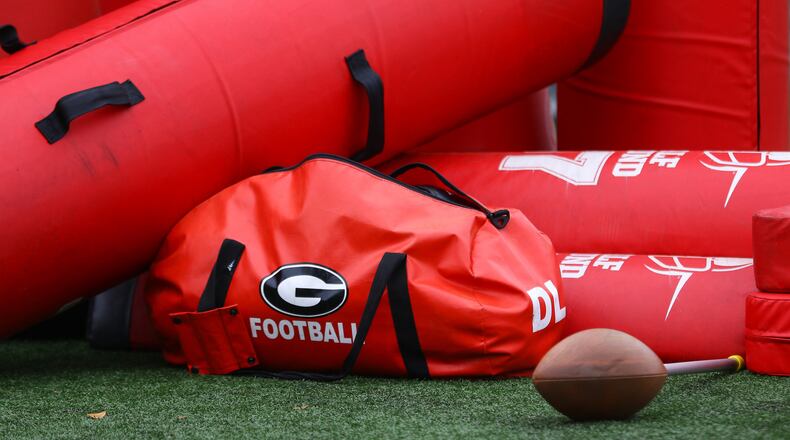Stop me if you’ve heard this before, but the NCAA is weird. Sometimes it’s a big deal. When it canceled March Madness, that was the greatest act any U.S. corporate entity could have performed for our communal health. When it comes to big-time football, the purported governing body of collegiate athletics has little to do with anything. The NCAA runs every championship in every sport except, um, the biggest one. Make sense to you?
Me neither. Such, however, is life. In college football, the Power Five conferences call the tune. As we draw ever nearer to Aug. 1, the date Georgia athletic director Greg McGarity has underscored as the likely moment of a play-or-don’t-play decision, those conferences are still trying to find ways to conduct football on schedule, give or take. (The Big Ten and Pac-12 have already scrubbed non-conference games.)
It’s entirely possible the Power Five will decide there’s simply no way forward for football in 2020, but they won’t make such a decision on the NCAA’s say-so. In this one sport, what Greg Sankey and John Swofford think matters more than anything Mark Emmert has to say. Still, the NCAA’s Sports Science Institute issued a report Thursday – full title: “Resocialization of Collegiate Sport: Developing Standards for Practice and Competition” – that includes pretty much everything except the sentence: “Don’t even think about playing now.”
Anyone slogging through the verbiage would be hard-pressed to come to any other conclusion. Said Emmert in a statement: “When we made the extremely difficult decision to cancel last spring’s championships, it was because there was simply no way to conduct them safely. This document lays out the advice of health-care professionals as to how to resume college sports if we can achieve an environment where COVID-19 rates are manageable. Today, sadly, the data point in the wrong direction. If there is to be college sports in the fall, we need to get a much better handle on the pandemic.”
The NCAA report begins with a chilling chart. It shows where confirmed cases of the virus were in April per one million residents over the previous week when the NCAA began “conversations about return to sport.” Back then, there were slightly more than 600 positives per million per week. Today there are more than 700 per million. In April, the NCAA believed there would be fewer than 400 per million by this time. Tweeted the NCAA: “Although testing and contact tracing infrastructure have expanded considerably, the variations in approach to reopening America for business and recreation have correlated with a considerable spike in cases in recent weeks.”
You might interpret that as a polite way of saying, “Look, our various governmental agencies have messed up.” We try hard not to render political judgments in this space. But, in case anyone misses the point, the NCAA also includes graph lines charting the number of cases in Canada, Japan and the European Union. They’re all fewer than 100 per million.
We civilians can bicker about wearing masks until we’re blue in the face – which mightn’t be obvious if you’re wearing a mask — but college administrations must deal with the reality of an approaching deadline. Per the NCAA’s chart, the trajectory of the virus spread is nowhere near where it was expected to be three months ago. Can these administrators in good conscience safeguard their athletes, even with the battery of tests the NCAA advocates, in any meaningful way? Can these administrators test athletes every few days over several months when ordinary folks are having trouble getting a result within a week? Are ballgames THAT important?
From the final paragraph of the NCAA report: “At the time of this writing, the rate of spread of COVID-19 has been increasing in many regions of the country. Because of this increase, it is possible that sports, especially high contact risk sports, may not be practiced safely in some areas. In conjunction with public health officials, schools should consider pausing or discontinuing athletics activities when local circumstances warrant such consideration.”
Football, you should know, is defined by the NCAA as a “high contact” sport. So is basketball. So is soccer.
Again we stipulate: This is the NCAA, and the big conferences could well toss this report in yonder trash can and say, “Don’t care. We’re playing anyway. Toe meets leather!” But it would seem to grow harder with every week to ignore what’s happening and insist on playing a sport that, if fans are allowed to attend games, could prove injurious to the welfare of an entire region.
Back in the spring, the NCAA – to its massive credit – saw the big picture and canceled a billion-dollar tournament. The same oft-reviled NCAA just handed those empowered as stewards of college football a document that suggests they consider doing likewise. Two weeks from now, we’ll know if it made any difference.
About the Author


